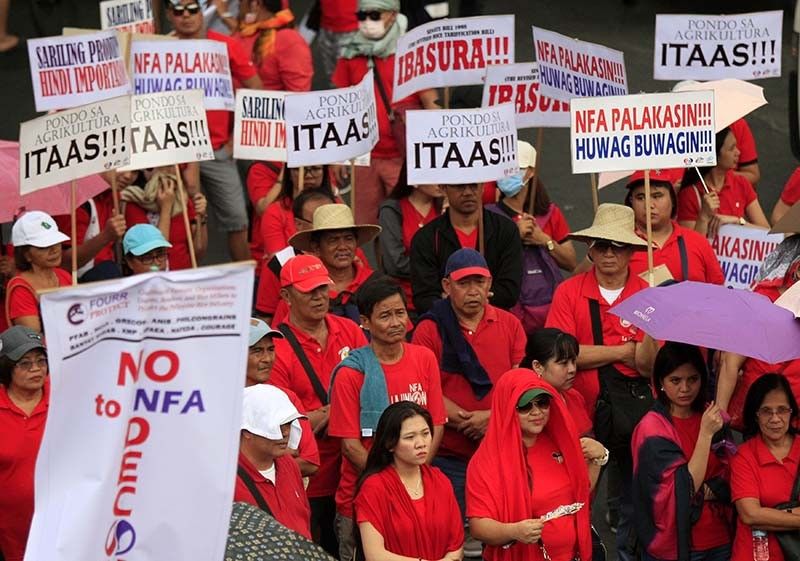Commentary: Philippine economy set up for a tough start to 2019

One thorny issue that dominated the economy last year was inflation—one of the top concerns of Filipinos. With only a few months left before the midterm elections, political hopefuls are treading carefully. Some have kept their distance from the issue, while others have used it to underscore the shortcomings of the Duterte administration.
Luckily for the incumbent government, the inflation rate has slowed down over the last two months of the year, to close 2018 at 5.1 percent, the lowest since May. This brings the 2018 average to 5.2 percent, or the lower end of the Bangko Sentral ng Pilipinas’ full-year forecast. This, however, went beyond target, and is also much higher than the 2.9 percent inflation registered in 2017.
Last December, the inflation rate was weighed down by the slower price increases in food and non-alcoholic beverages, as well as in transport. Production issues in various food items, such as rice, fish, meat, and vegetables have been consistently pushing food prices upwards.
Indeed, the shortcomings in the agriculture sector have been partly blamed for the soaring inflation. Secretary Manny Pinol himself called 2018 a painful year for agriculture and explained that his department missed its growth targets because of the onslaught of typhoons. By his estimate, the sector only grew by 1 percent in 2018.
Among these food items, rice was the leading contributor to inflation. The unreliable rice supply is rooted in the country’s long-standing problems in its rice policy, particularly its obsession with rice self-sufficiency.
In 2018, the National Food Authority’s failure to import rice on time pushed commercial rice prices even higher. At one point, the NFA’s buffer stock dwindled to just 200,000 bags, good for less than half a day, and far below the mandatory 15-day buffer stock. To remedy the situation, the additional importation of rice was approved.
However, the target volume for rice imports were missed in October, and the NFA changed its mode of procurement to a government-to-government scheme—the fastest, albeit, a more corruption-prone means of importing rice. Rice prices eventually stabilized with the additional imports and good harvest season in the final quarter of the year.
A month before Christmas, Duterte’s economic team finally got its wish–lawmakers passed the rice tariffication bill it had long been pushing for. The government estimates that this reform will lower prices by as much as P7 per kilo. However, some analysts argue that the 35 percent tariff rate is still too high to make a substantial dent in rice prices.
Aside from food items, volatile crude prices also determined inflation’s trajectory. From opening the year at an average of US$66 per barrel, it peaked at US$79 per barrel in October, before plunging to US$ 56.5 per barrel in December due to excess supply, expectations of slower global economic growth, and the ongoing trade dispute between the US and China.
With the declining fuel prices, the government called for a provisional fare rollback of jeepneys in some regions and canceled plans to suspend the next tranche of oil tax increase in 2019 under the Tax Reform for Acceleration and Inclusion (TRAIN) Law.
Unsurprisingly, households whose incomes are in the bottom 30 percent were more adversely impacted by higher commodity prices. For this income group, food items, the leading driver of inflation, are weighed more heavily in their consumption basket.
By the third quarter of 2018, inflation for the bottom 30 percent peaked at 8.3 percent, due to higher markups on all food groups. On a more positive note, preliminary data show that inflation for this group has softened toward the end of the year, as the indices of food, beverages and tobacco, and fuel, light and water, have eased.
Although the government insists that the TRAIN law's effect on inflation was only minimal, those in the lower income groups, who did not benefit from reduced income taxes, undeniably bore the brunt of its impact.
To mitigate the effects of higher excise taxes on the poor, the government has rolled out unconditional cash transfers and fuel subsidies for public utility vehicle operators. Yet these measures, riddled with bureaucratic delays, have failed to protect its beneficiaries.
For the year ahead, the outlook is more positive as BSP is expecting inflation to fall back to within its 2 percent to 4 percent target, earlier than it initially expected on account of lower global oil prices, and the impacts of key measures, such as the rice tariffication law and the successive interest rate adjustments it introduced in the previous year.
Duterte’s economic managers can breathe a momentary sigh of relief, but as they surely know more work still needs to be done.
Weslene Uy is an economic fellow at think tank Stratbase ADR Institute, a partner of Philstar.com.
- Latest
























